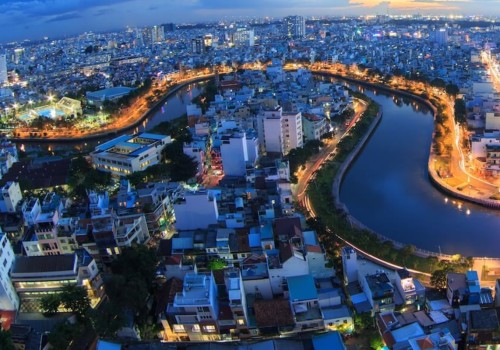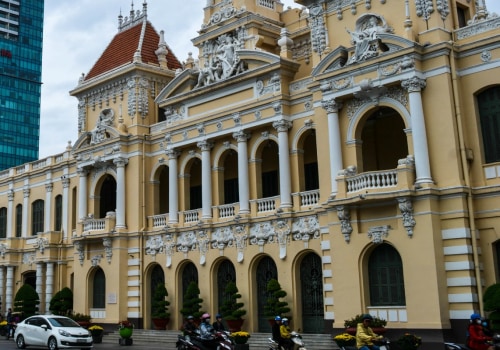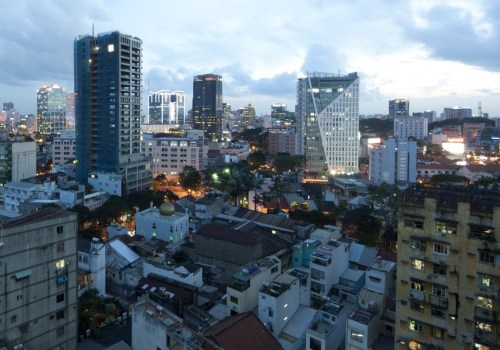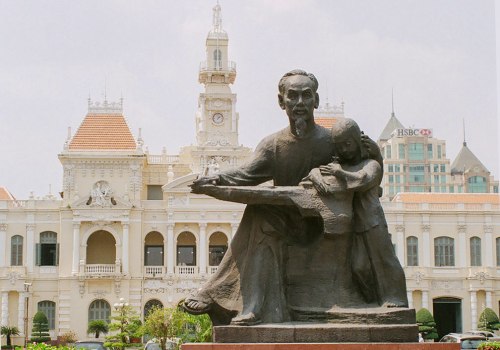Ho Chi Minh City (HCMC) is among the top 10 cities in the world most likely to be severely affected by climate change. The city's flood management system is at the limit of capacity. During the rainy season, residents face flooding in low-lying areas and also in the central districts. Population growth and rapid urbanization have caused the city to sink by as much as 80 millimeters a year for the past 20 years.
But the worst is yet to come with climate change and rising sea levels. By 2050, parts of Vietnam's largest metropolis could slide underwater, says UN Intergovernmental Panel on Climate Change report. The city, which covers more than 2,000 square kilometers, is developing so rapidly that it is also sinking, especially in the chunks of built-up areas near the banks of the Saigon River, where the ground is soft. In South Korea, the 33 km Saemangeum land and sea dam reclamation project has taken 30 years since construction began, quotes Ky.
The marine wall itself took almost 20 years to build. And not only does Ho Chi Minh City sink, but also the southern delta region of Vietnam in which it is located, from the Saigon Delta to the Mekong Delta. Almost half of Ho Chi Minh City in Vietnam is less than one meter above sea level, making it very vulnerable to flooding. While authorities have raised roads, one consequence is that everyone is rushing to raise their property above road level.
Located in the delta areas of the Sai Gon and Dong Nai river systems, Ho Chi Minh City faces many challenges related to urban flooding caused by high tides and heavy rains. Nowadays, many people in Ho Chi Minh City want to raise their houses because not only do they flood every year during the rainy season from May to November, but also the floods are getting worse. Located in a flat delta region, between 40 and 45 percent of Ho Chi Minh City is less than a meter above sea level. And with some of the solutions offered by the authorities, such as the construction of a giant lesbian that triggers a debate on appropriateness and risks, the Insight program explores whether one of Asia's fastest-growing economic centers can be saved.
Since then, the authorities have put in place measures to curb the extraction of groundwater and help prevent further subsidence. However, if it is a question of improving the defenses of Ho Chi Minh City, the project would not only be expensive, but it would also take a long time to complete. The team used the model to explore how several options, including adaptation, removal of unprotected areas and investment in new infrastructure, could reduce risks for a number of uncertain conditions. Dang Nha Cong, a fifth-generation farmer in southern Vietnam whose family farming tradition dates back more than 150 years, is now worried about the future of his farmland and tropical fruits, even after building a barrier around him.
These new flood control systems are designed to monitor water levels in Ho Chi Minh's canals and improve the effectiveness of your drainage system. Hoang, the fruit vendor, who has often watched with dismay as flood waters rushing through the streets of his neighborhood, has only one option. Ha Minh Chau, Manager in Charge of the Climate Change Office, Department of Natural Resources and Environment, Ho Chi Minh City. One method to account for these uncertainties is Robust Decision Making (RDM), a methodology that examines scenarios hundreds and thousands of years from now.
.




